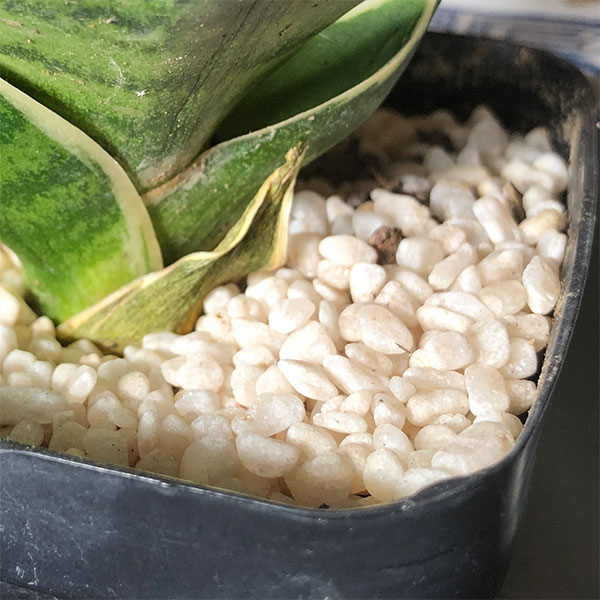One of the common problems with indoor plants, fungus gnats can harm young seedlings and are a pest around the house.
What are Fungus Gnats?

Fungus Gnats are a common problem with house plants, the combination of damp soil and warmth makes a perfect breeding ground, so here’s haw to get rid of fungus Gnats and help prevent future infestations.
These gnats are a small fly like insect that lay larvae in the soil, the larvae hatch, make their way to the surface and turn into the annoying small flies.
A number of different types exist, all part of the Sciaroidea family. They are attracted to decomposing soil, humidity and moisture, so indoor plants and greenhouses are where they present major problems.
Why are Fungus Gnats a problem ?
From lavae to adult fly is a life cycle of around 3 weeks, so they can very quickly increase in numbers.
It is actually the lavae that damage the plants by attacking the root system, this is particularly a problem with small seedlings.
However the small flies are a pest in the house and can easily be controlled.
How to control Fungus Gnats.
A number of chemical controls exist as well as sticky traps these will all work, however a few simple organic methods are also available.
A layer of sharp sand or very fine crushed rock on the surface of the soil works well. This needs to be around 1/2 inch deep (1.5cm). The sand needs to be coarse enough to dry quickly after watering.
The sand prevents the larvae from laving the soil, so they die, it also stops the adult flies from laying the eggs, as the sand is dry and they like moist soil for laying the eggs.
Method :
- Remove the top 1/2 inch of soil in the container.
- Replace with fine washed sharpe sand or small stones.
- Always allow the sand to dry before watering.
- In 2- 3 weeks the Fungus Gnats should be gone.
You can also get rid of the Adult Flies by :
- Using the Yellow sticky traps available at most nurseries.
- Placing small jars half filled with apple cider vinegar and a dash of dishwashing liquid near the plants.
Other solutions.
- Cinnamon powder can be sprinkled on the surface of the soil, this acts as a fungicide and controls the fungus that the larvae feeds on.
- Diatomaceous Earth can also be used, you will need the food grade variety, HOWEVER, you will also need to wear a mask so as not to breathe it in, we do not recommend using this method.
- Hydrogen peroxide solutions can also be used. A 3% solution will kill the larvae fairly quickly, too strong a solution however can kill the plants.
- Neem Oil will also kill the larvae, not really quickly however it works.
- Other chemical sprays and drenches are also available.
Three Step Method to Get rid if fungus gnats
We use a 3 pronged approach and all of these need to be done at the same time.
The fungus gnats don’t live in the soil, they lay their eggs in the soil, and lots of them.
The Gnats themselves fly around and live on the plants.So Start by killing the Fungus Gnat lavae using a hydrogen peroxide bath or need oil. However a liquid larvicide is much better.
Step 1 – Drenching.
Drenching kills the Lavae
- A bath in hydrogen peroxide will kill the Gnats eggs that are in the soil, Neeme oil will do the same thing, and neem cake tea is said to be even more efficient than neem oil, however not all neem cake is the same, so this is debatable. Anyway this is where we start.
The neem oil and hydrogen peroxide work in different ways and We have a seperate video on this and the link is in the notes below the video. - Products that contain Bacillus Thuringiensis Subsp. Israelensis Serotype are MUCH MORE effective so these are Mosquito Bits OR Vectobac which is a liquid larvicide.
We prefer Vectobac, simply mix at 1-3mls per 1L depending on the infestation of fungus gnats. ( The more Gnats the higher the concentration, however 3ml per litre is the maximum) Drench soil / substrate and repeat this again in 5 – 7 days.
Step 2 – Traps
Yellow sticky trapsAt the same time install some yellow sticky traps to catch the adult (Flying Gnats).
Step 3 – Preventive barriers
Immediately after using the lavicide hydrogen peroxide or neem oil bath use a layer of horticultural sand OR small decorative stones over the top of the soil. This helps prevent the Gnats from laying their eggs and helps break the cycle.
If you use the sand, which is more effective, bottom water by sitting the pot in water for around 5 – 10 minutes once a week. You need to judge how often you water depending on conditions, water requirements and the soil you are using.
You can also use food grade diatomaceous earth however the dust is an irritant and we don’t recommend using it, (we don’t use it) unless you are using proper personal protection glasses, mask and gloves and carefully follow the instructions on the packet.
Prevention is better than Cure.
You can also try to prevent Fungus Gnats using these methods.
- Create good air flow to lower humidity.
- Always allow the top of the soil to dry between waterings.
- Do not over water plants.
- Remove any dead leaves from pots immediately.
- Do not use water retentive mulches on indoor plants.
How do you know if you have Fungus Gnats ?
- Those small Gnats flying around indoor plants are the easiest way.
- Small white larvae near the top of the soil.
- Yellowing leaves can be a sign.
- Young plants that suddenly begin to wilt.
